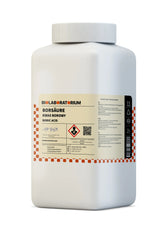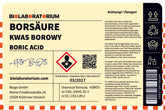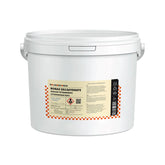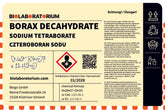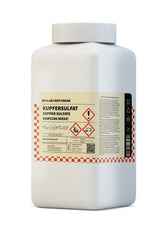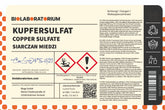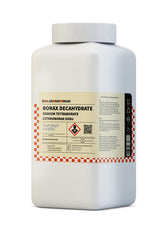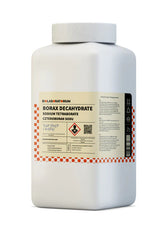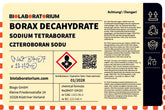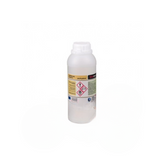Ammonium benzoate – A crystalline organic compound with an interesting structure and special properties
Ammonium benzoate is a crystalline organic compound that finds diverse applications in chemistry and industry. This substance, which consists of benzoic acid and ammonia, is characterized by a unique molecular structure and interesting properties. In this blog post, we will take an in-depth look at ammonium benzoate and examine its production, structure, and possible uses in more detail.
The production of ammonium benzoate
Ammonium benzoate is typically produced by the reaction of benzoic acid and ammonia. This process can be carried out in the laboratory or in industrial production facilities. On a laboratory scale, ammonium benzoate can be synthesized relatively easily by adding an aqueous solution of benzoic acid to an ammonia solution. In this process, the ammonium salt of benzoic acid forms, which precipitates as a crystalline solid.
In industrial production, the manufacture of ammonium benzoate often occurs as a byproduct in the production of other chemicals. For example, it can arise as an intermediate in the synthesis of benzamide or other benzoic acid derivatives. Through targeted crystallization and purification, the ammonium benzoate can then be obtained as a pure substance.
The molecular structure of ammonium benzoate
The molecular structure of ammonium benzoate is relatively complex and exhibits some interesting peculiarities. The ammonium cation (NH4+) is bound to the carboxylate group of the benzoate anion via hydrogen bonds. This ion pair forms the basic unit of the crystal lattice.
Within the crystal, the ammonium cations and benzoate anions are arranged in an ordered, crystalline structure. The hydrogen bonds between the ions contribute significantly to the stability and strength of the crystal lattice. Furthermore, π-interactions between the aromatic benzoate rings can also play a role.
This unique molecular structure gives ammonium benzoate specific physical properties, such as a high melting point and good solubility in polar solvents.
Properties and uses of ammonium benzoate
Ammonium benzoate is a crystalline, white solid that is odorless and tasteless. It is characterized by good solubility in water and other polar solvents. The melting point of ammonium benzoate is about 114 °C, which is due to the strong hydrogen bonds in the crystal lattice.
Due to its chemical structure and properties, ammonium benzoate is used in various application areas:
Use in chemistry and industry
- As an intermediate in organic synthesis, e.g., in the production of benzamide or other benzoic acid derivatives
- As a buffer substance in chemical analysis procedures and laboratory applications
- As a component in cleaning agents, disinfectants, and other household products
- As a preservative in the food industry
Use in medicine and pharmacy
- As an excipient in pharmaceutical formulations, e.g., in tablets or ointments
- As a component in cosmetic products such as creams or lotions
- In veterinary medicine as an active ingredient component in animal care products
Use in research
- As a model substance in crystallography for the investigation of crystal structures
- In materials science for the development of new functional materials
Overall, ammonium benzoate offers a broad spectrum of application possibilities in chemistry, industry, and research due to its diverse properties and application options.
Conclusion
Ammonium benzoate is a fascinating organic compound that convinces through its unique molecular structure and interesting properties. From production in the laboratory to industrial applications in chemistry, medicine, and research – ammonium benzoate is a versatile and useful substance. Through a deeper understanding of its structure and functionality, we can better exploit the potential of this substance and unlock new innovative applications.

